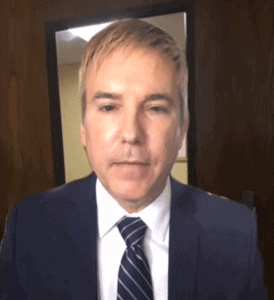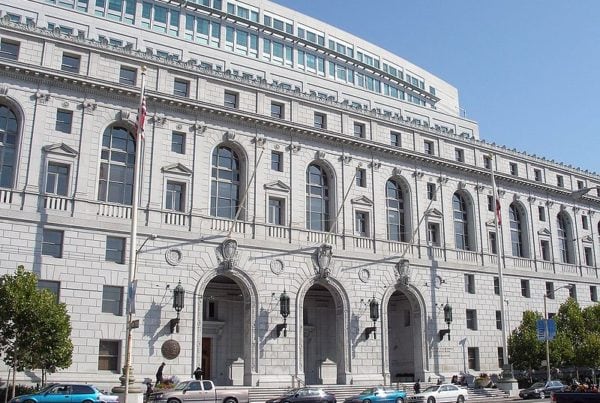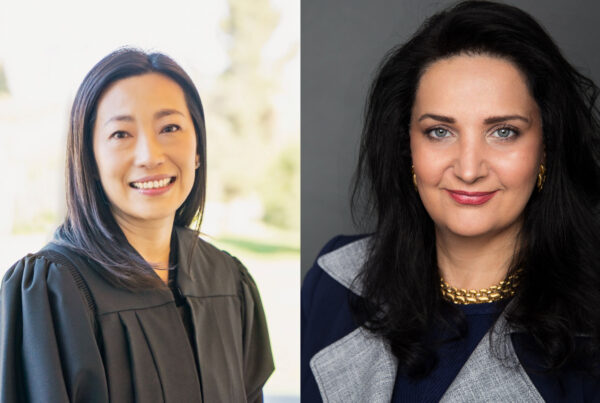Taking sides in a decades-long appellate debate, the Fourth District Court of Appeal, Division Two, ruled June 28 that trial courts can consider whether a public entity claim is valid before a suit is filed.
The ruling disagreed with a set of appellate law that says arguments about a claim’s validity may be raised only after the lawsuit begins.
“We see no sound reason why a petitioner should not be able to raise actual compliance in a Section 946.6 petition, or why the adjudicating court should be precluded from deciding that a submitted claim was compliant if there are no disputed issues of fact that need to be left for a jury’s determination,” the court ruled.
The decision came from Timothy Simms, a self-represented petitioner who wants to sue the Bear Valley Community Healthcare District in Big Bear, and claimed damages and intent to sue in an April 24, 2018, letter to Bear Valley.
Claims, or statements of damages and requests to settle before a lawsuit, are required before lawsuits of public entities.
Simms was alleging the Bear Valley’s denial of services, and statements they made that he was looking for drugs, constituted medical malpractice.
Bear Valley argued that the 2018 letter was not a valid claim. That assertion would mean the statute of limitations’ preventing Simms from filing suit.
San Bernardino Superior Court ruled the 2018 letter was not a valid claim, because it was lacking a category of information, but the Court of Appeal reversed.
“I did everything that I could possibly do to put them on notice that I would be filing a lawsuit if they didn’t correct certain things, and continued to treat me, not only in a professional manner, but to treat me, physically for my injuries instead of calling me a drug seeker, which is absolutely horrible and defamatory as I have been a clean and sober man, and have been since my son was born in 1997,” Simms said in oral argument.
Care denied
The ruling established the facts of the case. Simms suffered injuries from a fall Dec. 8, 2017, and went to Bear Valley for treatment.
He complained verbally in December, 2017, and January, 2018, that the providers believed he was trying to gain drugs on false pretenses, and that they refused to treat his pain.
Bear Valley responded to his complaints Jan. 30, 2018.
After more appointments in March and April, 2018, Bear Valley sent Simms a formal notice April 24, 2018, that they would no longer serve as his primary care provider “due to unresolved differences in treatment/care philosophy.”
Simms responded to the January letter May 13, 2018, before reading the April 24 letter because he was out of town.
He detailed his experiences and denied seeking drugs. He said he was treated like a criminal, which added to his stress and anxiety. He said he wanted the providers to help him control his chronic pain, order additional scans to investigate his pain and either renew his medications or transition him to better medications.
He claimed a Bear Valley doctor defamed him, and that he would file a lawsuit for restitution if he continued “to be defamed, harassed, mistreated and ignored by (Bear Valley).”
Bear Valley did not respond.
Simms sent Bear Valley a July 11, 2019, letter framed as a 90-day notice of intent to sue. In the letter, he said MRI scans from his new health care provider showed spinal injuries that Bear Valley failed to diagnose.
Bear Valley treated the July, 2019, letter as the claim instead of the May, 2018, letter.
The 2019 letter was too late to be considered, because it was presented more than six months after the event, Bear Valley said.
San Bernardino Superior Court found that the May, 2018, letter did not qualify to be a claim, and that Simms did not qualify for relief from a late claim.
Simms could not sue Bear Valley, the court ruled.
Split court
The 1989 case Ngo v. County of Los Angeles, the 1988 case Rason v. Santa Barbara City Housing Authority both state that a claim should be argued as valid in a legal complaint.
In contrast, the 1990 case Santee v. Santa Clara County Office of Education and the 1988 case Reyes v. County of Los Angeles both state that a valid claim can be argued before a complaint is filed.
The Santee decision takes the better approach, this appellate ruling says.
The purpose of the claim requirement is to provide a public entity with enough information to avoid needless litigation, and requiring the claim validity to be argued after the lawsuit is filed adds to needless lawsuits, the ruling says.
“The Ngo approach multiplies legal proceedings unnecessarily, effectively requiring claimants who dispute a public entity’s determination of timeliness to pursue the dual track of both (1) filing a civil lawsuit alleging compliance and (2) applying for relief first from the public agency under Section 911.4 and then, if denied, from the court under Section 946.6,” the ruling says.
There is also no reason why a court presiding over a claim hearing would not have the power to decide whether the claimant had presented a timely claim, the court ruled.
The split of precedent causes careful lawyers to take a “belt-and-suspenders” approach by both filing a complaint, and filing a claim-relief petition, and traps people who do not know they should do both, the court said.
“We see no good reason to interpret the Government Claims Act in a manner that creates additional traps for the unwary, no matter how well established the procedures that have been developed to avoid them and that are routinely used by sophisticated claimants or those with the benefit of legal counsel,” the ruling said.
Claim found valid
Then, the appellate court disagreed with the trial court’s decision that Simms’ 2018 letter was not a valid claim.
Under California law, a valid claim must have the date, place and other circumstances of the wrong, and a general description of the injury, damage or loss.
Simms’ 2018 letter contained that information, and threatened a suit for restitution, but it does not provide a dollar amount he requested, which is also required. Instead, Simms asked for changes to his medical records and an apology from a doctor.
The court ruled that the letter was a claim, but that it was incomplete because it lacked a dollar amount.
According to case precedent, Bear Valley should have responded to the letter requesting Simms to restate his claim with a dollar amount, the court ruled.
Because Bear Valley failed to respond requesting clarification, they waived any defense against the adequacy of the claim, the court found.
“Bear Valley nevertheless wrongly asserts that there is ‘nothing in (Simms’ May, 2018, letter) to settle.’ On the contrary, the letter is an offer to settle, proposing that in exchange for Bear Valley removing offending statements from Simms’s medical records and refraining from further treating Simms in a manner he found objectionable, Simms would refrain from bringing a lawsuit,” the ruling said.
During argument, Associate Justice Michael Raphael said that Simms was actually being more reasonable by asking for adequate care and the wrongs fixed instead of demanding a dollar amount.
Case information
Simms represented himself.
Kathleen Stosuy, Deborah DeBoer, and Karla Meier of Kramer, DeBoer & Keane represented the defendants.
Riverside Superior Judge Keith Davis presided at trial court.
Associate Justice Michael Raphael wrote the opinion, which Acting Presiding Justice Carol Codrington and Associate Justice Frank Menetrez joined.
Riverside Superior Court Case number CIVDS1934524.
Appellate case number E075184.
Watch oral argument here.
Read the ruling here.








